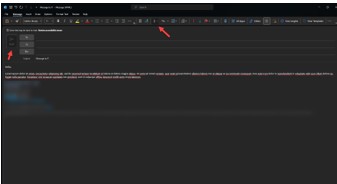It’s not uncommon to encounter problems in HCM Implementations, or any business endeavor, for that matter. Diagnosing and documenting problems is important for removing blockers and keeping projects on track.

So how can you get better at diagnosing and documenting these problems? Often, issue resolution is delegated to the first available resource, with a deadline as an incentive for the resource to solve the issue. This kind of delegation is not an effective way to maximize the talents or time of the project team. The saying “Don’t judge a fish by its ability to climb a tree” comes to mind. It’s important to slow down and choose the right “fish” or “tree climber” (Subject Matter Expert) to diagnose and resolve issues more quickly and more effectively.
Subject Matter Experts (SMEs) are integral to any collaborative project team. All organizations will have at least one SME; most organizations will have many SMEs. Another thing great organizations will implement, regardless of whether the resources on a project are SMEs or not, is giving their team members permission to say, “I don’t know, but I can find out.”
Diagnose and Document
You don’t have to be an SME to contribute to the success of a project. Being able to diagnose and document steps toward resolving an issue effectively is invaluable. The practice of diagnosing and documenting issues during a project translates perfectly to the skillsets your team members benefit from when it comes to being productive and effective.
Your HCM Implementation team members could easily have different learning styles, Including the following:
- Kinesthetic Learning (Learn through doing – recreating the problem)
- Aural Learning (Listening to a description of the problem)
- Visual learning (Understand through visual media such as charts or screenshots)
Your process for diagnosing problems should take these different learning styles into account. Remember that no matter what learning style you use, communication in multiple formats assists in building the understanding of all team members.
Let’s go through an example of documenting an issue and reporting it to a resource for help. In this example the issue involves two employees. Each are attempting to attach a file to an email, and both state they are having problems.
Employee A sends the following email to their assigned IT Resource:
“Hello,
I’m experiencing an issue when trying to attach a file to an email and don’t know why. Can we connect on a call to resolve this issue?”
Employee B sends the following email to their assigned IT Resource:
“Hello,
I’m experiencing an issue when trying to attach a file to an email. Below, you will find the steps I’m taking to attach this file, as well as a screenshot:

Navigation Path: Menu> File> New Message> Upon entering the title and body of my message, I noticed the icon to attach a file is greyed out. I also noticed the Send button is greyed out”.
While this is a simple example, it still illustrates key differences in resolving a problem. Documentation of a problem or issue should include:
- The steps taken
- Documentation or instructions followed
- Expected result
- Actual result
It’s helpful to provide complete information on your steps taken and reference documentation you may have been using, such as the requirements documentation or training materials. Also, including what your expected outcome was and what the actual outcome will help your resource resolve your issue faster.
Setting standards to make diagnosis consistent
When we create a process using language and terminology consistent with the environment or workspace we’re referring to, we give everyone the best chance to help, whether they are an SME or not. If you do not have documented guidelines, including practical standards for troubleshooting and diagnosing problems, you may not be maximizing your team’s productivity. To build your team of SMEs, set the standards your team should aspire to with effective communication and rigorous processes when it comes to diagnosing problems.
Looking for a partner for your HCM Implementation? Contact HRchitect to discuss how we can help you succeed.
About the Author

Richard Valera brings several years of experience as an implementation and functional consultant to the HRchitect team. Before joining HRchitect, Richard was a Pre & Post Implementation Functional Consultant at a former HCM consulting firm and a Post-Implementation Functional Consultant for three years at UKG.
Richard is a proactive consultant and his combined years of experience in HCM software consulting, coupled with his configuration, troubleshooting, software integration, and data analysis skills allows him to truly understand the need to quickly and accurately diagnose problems.
To learn more about Richard visit his LinkedIn page.

